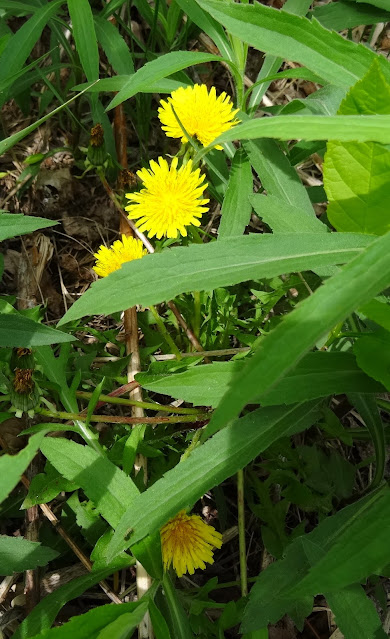 American Pasqueflower or Eastern Pasqueflower (in the Buttercup family) provides a large amount of pollen for pollinators, an important early-spring resource for female bees to provision their nests.
American Pasqueflower or Eastern Pasqueflower (in the Buttercup family) provides a large amount of pollen for pollinators, an important early-spring resource for female bees to provision their nests.
Showing posts with label pollen. Show all posts
Showing posts with label pollen. Show all posts
4/30/2023
pasque flowers
7/07/2022
culver's root
Culver's Root Veronicastrum virginicum is found growing in wetlands and wet prairies.
The individual flowers are comprised of four fused petals up to a half an inch long. A main spike at the top of the plant is surrounded by several other spikes of flowers. The flowers bloom from the bottom of the spike up. Culver's Root is not bothered much by leaf-chewing insects or mammalian herbivores. The seeds are too tiny to be of much interest to birds. However, many varieties of insects visit the flowers to collect pollen or drink nectar.
(above left) Culver's Root just before it blooms.
(above right) A Black Wasp drinks nectar from the flowers while hunting for prey items; their bodies are covered in fine hairs that also collect pollen.
(below) A Bumble Bee with bulging pollen pockets stops for just a few more from this blooming Culvers Root.
5/12/2022
nectar and pollen
Before June, dandelion flowers are one of a few important food source for pollinators, providing both nectar and pollen for bumblebees and honey bees. Other various insects like beetles, hoverflies and butterflies use the nectar as food. Some birds eat the seeds.
7/04/2021
yellow loosestrife
Small yellow wildflowers, brightening the green grasses and rushes around the pond now, are River Loosestrife Lysimachia hybrida, or Lowland Yellow Loosestrife. This plant bloomed last year, and came back stronger with more stems this season. Lysmachias produce floral oil rather than nectar. These plants are also pollen hosts for Macropis bees; the bees specialize in using a mixture of pollen and floral oil to produce offspring. read more at U of MN Extension
Subscribe to:
Comments (Atom)





